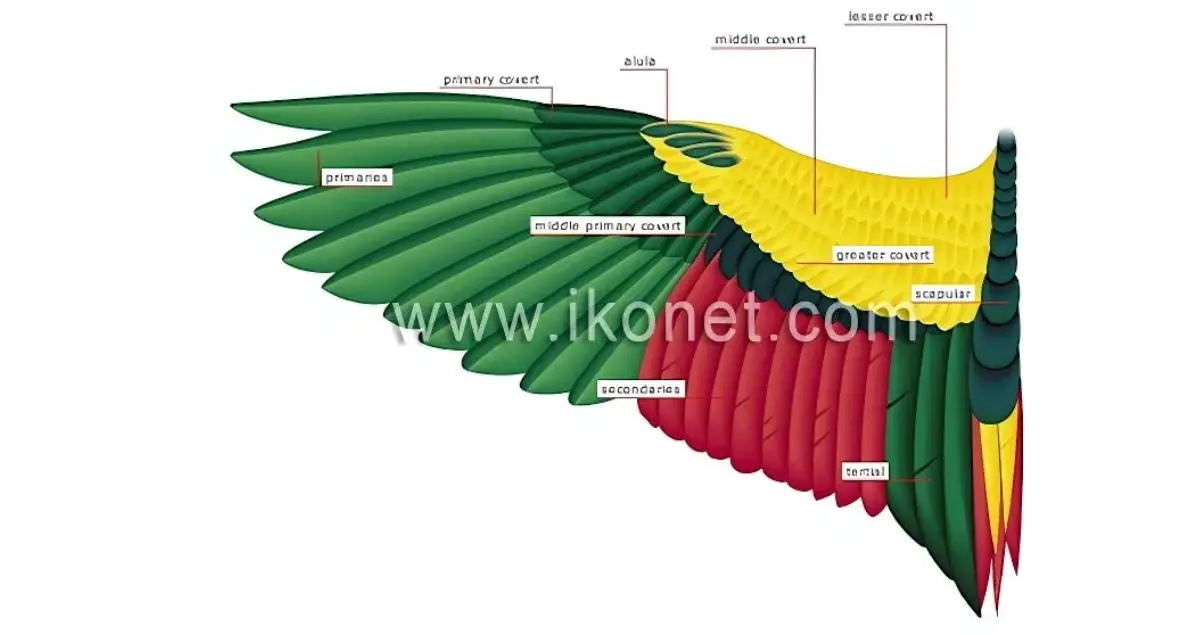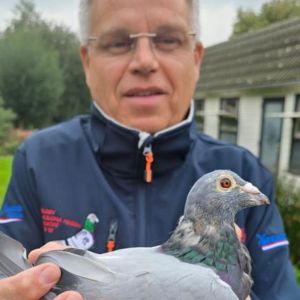
The official blog by Schalkwijk Pigeons
If you think the moult just “happens,” you’re underestimating what goes on inside a pigeon’s body. In the quiet phase after the racing season, the hardest work begins: replacing feathers, shifting energy, repair, and rebuilding. And those who manage it smartly lay the healthy foundation for next year.
How does the moult really work in a pigeon’s body?
Constant loss, constant renewal
The small body feathers (down and coverts) change all year round. But once a year comes the big moult: all the flight and tail feathers are replaced.
Order & symmetry
The moult often begins at the Primaries (starting with the1st feather, the one shorter near the body) and continues systematically. After that comes the secondary. These are partly renewed each year but fully within three years.
The tail feathers usually begin to drop once the sixth primary (counted from the inside out) has been shed. Remarkably, the two second-to-outermost tail feathers are always the last to go.
The covert feathers, only change once the first five primaries are in good condition.
Energy & blood supply
Each new feather demands huge amounts of blood flow, proteins, vitamins, and minerals. Hormones signal when the moult must start or stop.
Vulnerability
During the moult, pigeons have lower resistance and are more susceptible to disease. If the moult is rushed or incomplete, it puts extra strain on the immune system.

The engine at full throttle
The moult may look simple: old feather out, new one in. But inside, the body is working flat out.
Liver & kidneys: both are at full capacity. Yes, pigeons do have kidneys, but they work differently than ours. No bladder, no urine stream, just uric acid, that white chalky layer in the droppings. The liver supplies building blocks, the kidneys remove waste during this massive protein turnover.
Hormones: the thyroid (T3 and T4) sets the pace and timing. More release, faster moult. Day length and melatonin also play key roles.
Because so much energy goes into feather growth, pigeons are vulnerable. A poor moult means starting next year at a disadvantage. A flawless moult? That’s a pigeon that shines like a Ferrari in the sun.
Can the moult be controlled?
Yes, within limits. You have influence, but never total control. The pigeon’s body follows a biological program, guided by daylight, condition, and hormones.
For fanciers, this means you can use light management and feeding to slightly delay or accelerate the moult.
During the racing season, with more hours of light and high-protein feed, the moult often stays calm.
After the season, shorter days and a richer diet speed things up.
 I’ve done it myself many times. Back when I was racing in the Netherlands, I used the darkness system (shortening day length to stop the moult of flight feathers) and then added light after the longest day to guide the moult. Believe me, it worked.
I’ve done it myself many times. Back when I was racing in the Netherlands, I used the darkness system (shortening day length to stop the moult of flight feathers) and then added light after the longest day to guide the moult. Believe me, it worked.
And here’s a “big secret” (that many champions don’t like to share 😉): well before the first flight feather drops, I would pull the first three primaries ( closest to the body). Best done in February. Why? Because those three grow back before the racing season starts. That way, from May to July, the wing doesn’t stand half-open. My pigeons stayed “full in the feathers” all the way to the last international, often Perpignan in early August. A tough job, yes, but it can save your season.
Another method: trimming just the tip of the feather about to be shed. It delays the moult slightly but requires a steady hand.
How to help your pigeons through the moult
- Stimulate health: quality grain mix, vitamins, sulphur-rich amino acids, and minerals.
- Air & light: fresh air and natural daylight are unbeatable.
- Baths: twice a week, clean feathers grow better.
- Rest: avoid stress, fighting, or overload.
- No unnecessary meds: treat only when strictly necessary.
- Consistency: no sudden feed changes, drafts, or illness that could halt the moult.
- Training: light exercise is fine, but avoid heavy strain.
- Problem birds: those struggling with the moult do better in a quieter section of the loft.
Why this matters for racing performance
The moult is no side issue. It decides how strong, sleek, and functional your wing suit will be in the new season. A bad moult means losing before the first race is flown. A good moult? That’s your weapon to win prizes.
Yes, you can guide it, with light, feed, or even pulling a feather or two, but in the end, it’s always a partnership between fancier and nature. Push too hard, and you’ll reward yourself with half-grown feathers or frayed wings. And trust me: that doesn’t win races, except maybe the award for “most creative hairstyle.”
Remember: the pigeon is the director, you’re just the prompter. So, my fellow fancier: treat the moult with respect. It is the workshop of champions.
Until the next blog,
Gerard Schalkwijk





